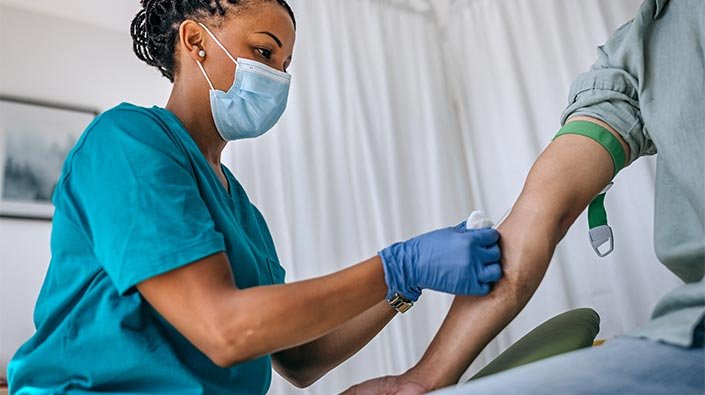Innovative Strategies in Hospital Supply and Equipment Management: Optimizing Operations in U.S. Hospitals
Summary
- Hospitals in the United States are implementing innovative strategies to improve Supply Chain efficiency and equipment management.
- These strategies are in response to discussions at global nursing summits, emphasizing the importance of optimizing hospital operations.
- By adopting new technologies and streamlining processes, hospitals aim to enhance patient care and reduce costs.
Innovative Strategies in Hospital Supply and Equipment Management
Hospitals in the United States are constantly looking for ways to improve their Supply Chain efficiency and equipment management to provide better patient care and reduce costs. The discussions at global nursing summits have highlighted the importance of optimizing hospital operations and leveraging innovative strategies. In response to these discussions, hospitals across the country have been implementing a variety of innovative approaches to enhance their Supply Chain efficiency and equipment management. Let's take a closer look at some of these strategies.
Utilization of Technology
One of the key strategies that hospitals are adopting to improve their Supply Chain efficiency and equipment management is the utilization of technology. By implementing advanced inventory management systems, hospitals can track their supplies in real-time, automate reordering processes, and reduce stockouts and overstocking. RFID technology, barcode scanning, and automated dispensing systems are some of the technologies being used by hospitals to streamline their Supply Chain operations.
Collaboration with Suppliers
Another important strategy that hospitals are implementing is collaborating closely with their suppliers. By building strong relationships with suppliers, hospitals can negotiate better prices, ensure timely deliveries, and improve the quality of their supplies. Collaborative partnerships with suppliers can also help hospitals stay informed about new products and technologies, enabling them to make more informed purchasing decisions.
Data Analytics and Predictive Modeling
Many hospitals are now using data analytics and predictive modeling to optimize their Supply Chain and equipment management processes. By analyzing historical data and trends, hospitals can forecast demand, identify cost-saving opportunities, and improve inventory turnover. Predictive modeling allows hospitals to anticipate equipment failures and proactively schedule maintenance, reducing downtime and ensuring continuity of care.
Standardization and Centralization
Standardization and centralization of Supply Chain processes is another strategy that hospitals are adopting to improve efficiency. By standardizing product selections and centralizing purchasing decisions, hospitals can streamline their Supply Chain operations, reduce costs, and improve Quality Control. Centralizing equipment management functions also allows hospitals to better track their assets, maximize utilization, and minimize losses.
Employee Training and Education
Employee training and education are essential components of any strategy to improve Supply Chain efficiency and equipment management in hospitals. By providing staff with training on proper inventory management practices, equipment maintenance protocols, and Safety Procedures, hospitals can ensure that their Supply Chain operations run smoothly and efficiently. Investing in continuous education and skill development for staff members can also lead to higher job satisfaction and retention rates.
Embracing Sustainability Practices
Many hospitals are also embracing sustainability practices in their Supply Chain and equipment management processes. By implementing green procurement policies, reducing waste, and recycling and reusing medical equipment, hospitals can not only reduce their environmental impact but also lower costs. Sustainable practices can lead to operational efficiencies, improve brand reputation, and attract environmentally conscious patients and staff.
Continuous Improvement and Feedback Loops
Continuous improvement and feedback loops are integral to the success of any strategy implemented by hospitals to improve their Supply Chain efficiency and equipment management. By regularly collecting feedback from staff, patients, and suppliers, hospitals can identify areas for improvement, address issues proactively, and adapt their processes to changing needs and priorities. Continuous improvement helps hospitals stay agile and responsive in an ever-evolving healthcare landscape.
Conclusion
In conclusion, hospitals in the United States are implementing a variety of innovative strategies to improve their Supply Chain efficiency and equipment management in response to discussions at global nursing summits. By leveraging technology, collaborating with suppliers, utilizing data analytics, standardizing processes, investing in employee training, embracing sustainability practices, and focusing on continuous improvement, hospitals aim to enhance patient care, reduce costs, and stay competitive in the healthcare industry. These strategies not only optimize hospital operations but also contribute to better outcomes for patients and a more sustainable healthcare system as a whole.

Disclaimer: The content provided on this blog is for informational purposes only, reflecting the personal opinions and insights of the author(s) on the topics. The information provided should not be used for diagnosing or treating a health problem or disease, and those seeking personal medical advice should consult with a licensed physician. Always seek the advice of your doctor or other qualified health provider regarding a medical condition. Never disregard professional medical advice or delay in seeking it because of something you have read on this website. If you think you may have a medical emergency, call 911 or go to the nearest emergency room immediately. No physician-patient relationship is created by this web site or its use. No contributors to this web site make any representations, express or implied, with respect to the information provided herein or to its use. While we strive to share accurate and up-to-date information, we cannot guarantee the completeness, reliability, or accuracy of the content. The blog may also include links to external websites and resources for the convenience of our readers. Please note that linking to other sites does not imply endorsement of their content, practices, or services by us. Readers should use their discretion and judgment while exploring any external links and resources mentioned on this blog.
